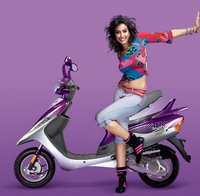Company : HUL
Brand Analysis Count : 333 is a global brand with its origin in UK in 1969.
is a global brand with its origin in UK in 1969. The fabric care market is broadly divided into three categories
Prewash : Stain removers, softners etc
Post wash: Whiteners
Obviously the mainwash category is huge and dominates around 60-70% of the total market. On the promotion side, the brand had just playing imported ads from the other markets
Watch one tvc here : Comfort ad
The ads are in the genre of animation /claymation and is totally out of sync with the Indian consumer's tastes. I am not sure why a company like HUL need to cut costs by importing foreign ads which are totally out of place in India.Frankly speaking , the ads does not convey any meaning and I never understood what the characters said . Hence I may not be able to speak on the positioning strategy of this brand.
The category is still emerging. The need for a fabric softener is not currently felt by Indian consumers. Especially the pre-wash treatment of clothes are new to Indian consumer. In the case of expensive clothes, consumers depend on drycleaning and for ordinary daily wear , we have taken for granted that the clothes should withstand the detergents and lasts for a reasonable time.
Hence the task of this brand is to create an awareness about the need for such products. There has been products like Bambi, and Ezee which had the softeners but failed to create a category .
Another hindrance to the category's acceptance will be the time and effort for using these products. In this fast life, do the customers have time to soak the clothes in softeners first and then wash it ? I guess no. In some cases where the clothes are pretty expensive, consumers may take the pain but in normal course, it is unlikely.
It was the reason why Unilever introduced Comfort Pearls in UK. Comfort pearls can be put in the washing machine along with the detergent and it gives the same result. It is a smart way of making the product easy to use for the consumer.
In India, the brand wants to test the market first before going all out. So initially this brand will be a niche product and I think that the category will be restricted to a niche.
But the way HUL has promoted this brand is a deviation from the usual best practices for which HUL is famous for. The company failed to take the local consumer tastes into consideration and just put some campaigns for the sake of it. There has been a trend in HUL to depend on foreign commercials fueled by the success of Axe campaigns. Lux , Rexona deo and Dove are other brands which recently started showing foreign ads. I feel that this is a unhealthy trend which can disconnect the brand from the consumer. Again and again it has been proved that Indian market needs to be addressed differently and HUL is trying to implement the plan of " One message( ad) for entire world ".
Its sad to see this from a company which talked about " Dirt is good ".








